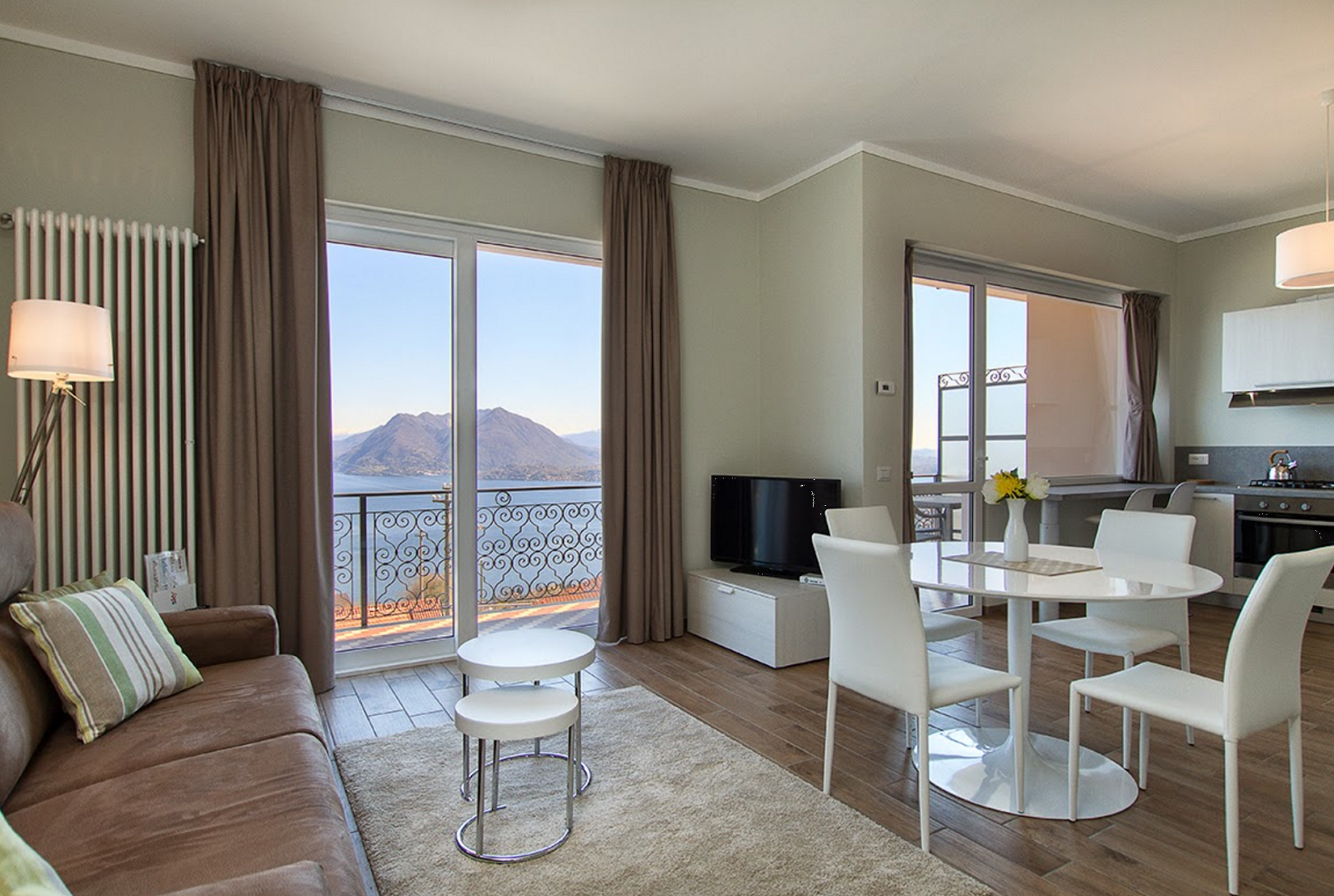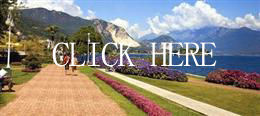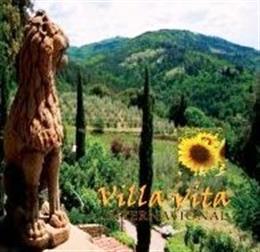SEARCH THIS BLOG
Tuesday, December 30, 2008
Franciacorta - Italy's Answer To Champagne
.jpg)
Franciacorta… the third wine to be discussed in my little miniseries on the sparkling wines of northern Italy . To recap, we have the Moscato d’Asti from Piemonte, and Prosecco, from the Veneto Lombardia . Land-locked Lombardia , Italy ’s largest, most populous region, home to Milano and Lake Como , is not known as a major wine-producing area, but it does have Franciacorta, Italy ’s truest answer to Champagne
Here are the similarities between Franciacorta and Champagne .jpg) Like
Like Champagne
.jpg) Like
Like
But there are differences as well, between these wines and their French cousins. Only a small amount of Franciacorta is produced each year; only one sixth the amount of Prosecco and far less than Champagne. They work better with food than Champagne
Franciacorta costs more per bottle than Prosecco or Moscato d’Asti. Look for it by the glass at wine bars; an excellent way to try it.
Sunday, December 28, 2008
Prosecco - Italy's Quintessential Aperitivo
.jpg)
Pro-SEC-co… Pro-SECCO… Prosecco… I never know exactly how to pronounce it, how to quite do that double ‘c’ sound, but no matter, I love saying it anyway. I’d go as far as saying that Prosecco is one of the reasons I go to Italy U.S. Italy ’s three main sparkling wines, Moscato d’Asti, Prosecco, and Franciacorta, today I’ll focus on the Veneto ’s contribution, Italy
It’s possible that Prosecco’s signature fizziness was discovered accidentally. Since the Veneto lies in the far northeast corner of Italy , against the Adriatic Sea, and with the Dolomite Mountains .jpg)
.jpg)
Today the best Proseccos are thought to be those from the area called Conegliano-Valdobbiadene in the Veneto
Coincidentally, the New York Times ran an interesting article today on the current state of the Italian Prosecco industry. Since Prosecco is the name of the grape, and not the region, it may be used for sparkling wines made from it, no matter where they are grown or the wine produced. There’s concern among the Italian growers of Prosecco in the Veneto
Like Italy Venice
Saturday, December 27, 2008
Moscato d'Asti and Asti Spumante - Piemonte's Sparkling Wines
.jpg) Just because New Year’s Eve and champagne are practically synonymous doesn’t mean you have to open something French to make a bubbly toast.
Just because New Year’s Eve and champagne are practically synonymous doesn’t mean you have to open something French to make a bubbly toast.
Moscato d’Asti and Asti Spumante are produced, naturally, around Asti .jpg) made today. The ripe Moscato Bianco grapes are separated from their stems just before being pressed. Then, the unfiltered grape juice is separated from the skins. The juice is fermented using the Charmat method, in the tank rather than in the bottle, but only for a short period of time. After fermentation the wine is filtered several times, finally leaving a clean and clear wine. Naturally high in sugar and low in alcohol, slightly fizzante, fizzy, Moscato d’Asti has become a sweet and fruity year-round favorite; perfect for apertivi or lunch, as well as paired with desserts. Simple and perfect.
made today. The ripe Moscato Bianco grapes are separated from their stems just before being pressed. Then, the unfiltered grape juice is separated from the skins. The juice is fermented using the Charmat method, in the tank rather than in the bottle, but only for a short period of time. After fermentation the wine is filtered several times, finally leaving a clean and clear wine. Naturally high in sugar and low in alcohol, slightly fizzante, fizzy, Moscato d’Asti has become a sweet and fruity year-round favorite; perfect for apertivi or lunch, as well as paired with desserts. Simple and perfect.
.jpg) made today. The ripe Moscato Bianco grapes are separated from their stems just before being pressed. Then, the unfiltered grape juice is separated from the skins. The juice is fermented using the Charmat method, in the tank rather than in the bottle, but only for a short period of time. After fermentation the wine is filtered several times, finally leaving a clean and clear wine. Naturally high in sugar and low in alcohol, slightly fizzante, fizzy, Moscato d’Asti has become a sweet and fruity year-round favorite; perfect for apertivi or lunch, as well as paired with desserts. Simple and perfect.
made today. The ripe Moscato Bianco grapes are separated from their stems just before being pressed. Then, the unfiltered grape juice is separated from the skins. The juice is fermented using the Charmat method, in the tank rather than in the bottle, but only for a short period of time. After fermentation the wine is filtered several times, finally leaving a clean and clear wine. Naturally high in sugar and low in alcohol, slightly fizzante, fizzy, Moscato d’Asti has become a sweet and fruity year-round favorite; perfect for apertivi or lunch, as well as paired with desserts. Simple and perfect.
Its cousin, Asti Spumante, is more effervescent than the Moscato D’Asti. Spumante, literally foaming, is also produced from 100% Moscato Bianco, and produced similarly to the Moscato d’Asti, with the unfiltered grape juice being stored in tanks at near freezing temperatures to prevent fermentation until a desired time. Then, temperatures raised and yeast added to the tanks in the Charmat method, fermentation begins. The main difference between the two wines is the length of fermentation time. Shorter for Moscato d’Asti, and longer for the Asti Asti
It’s tradition here in Piemonte to have a holiday toast with one’s neighbors and family with one of these sparkling Moscato wines and panettone. Nice tradition… let’s keep it going.
Asti is an easy day trip from Stresa and many of the wineries are open for tastings.
Wednesday, December 24, 2008
Picturesque Presepi
As promised, a few photos of the presepi show on Isola Bella. The collection of almost 100 nativity scenes are scattered around the island, like a treasure hunt, wonderful surprises turning up everywhere. Some are in the obvious places, the church, and the chapel, and others are hidden in less obvious spots; a piece of wood in an alcove becomes a pedestal for a porcelain presepio; a summer tourist newsstand is now a shelter for a large display.

The scene below is actually two-dimensional and etched in a piece of glass. It's small, and locked safely in a frame attached to a stone wall.
This very old and fragile set of figures is made completely of chalk. Sadly, the cow and the Virgin Mary have been lost, and the chalk is crumbling badly in places, but I love the soft colors and tender feel of this arrangement.
A nativity scene as depicted by an Ethiopian artist. Look at the details, the pots and dishes, the women seated on the left working, and the gauzy desert fabrics.


It’s quiet on Isola Bella. The weather on Vigilia di Natale, Christmas Eve, was unseasonably warm. Tourists are few. A Christmas mass was held in a small chapel. Normally the chapel holds 18; this day a ‘crowd’ of 40 filled it. Not too many shops are open. Nothing distracts from the serenity, simplicity, and true meaning of the day.
Monday, December 22, 2008
The Presepi of Isola Bella
Being on Isola Bella is always a bit like being inside a fairy tale. This 2008 Christmas season it is especially so, as it hosts an enchanting exhibition of presepi, nativity scenes.
Nowhere else in the world has the art of nativity scenes been taken to such a level as in Italy , where the tradition dates back to the 13th century, when St. Francesco d'Assisi
And in a country with literally thousands of presepi, the ones here on Isola Bella are still unique. A private collection, they are displayed here now in the streets, chapels, and alleys that surround the giant palace owned by the Borromeo family, who live there still. Yes, like a fairy tale. The presepi have been gathered here from all over the world. They are constructed of almost any material you can think of. There are large ones and small ones, elaborate and austere. There are about 100 of them here on display all around the island. I hope to have some photos to post soon of these.
In past years these presepi have been loaned to the merchants of Stresa for the Christmas season and displayed in their shop windows. As lovely as that was, I think this is by far a more meaningful and memorable way to take them in. Magical scenes of a magical event, on display in a magical place.
Saturday, December 20, 2008
Update! Panettone o Pandoro...
 Thanks to Babbo Natale, who made an early stop here, it's going to be much easier for me to decide which of the Christmas desserts I prefer. Wait! I don't have to decide at all. I can enjoy them both! Grazie mille Babbo Natale... :-)
Thanks to Babbo Natale, who made an early stop here, it's going to be much easier for me to decide which of the Christmas desserts I prefer. Wait! I don't have to decide at all. I can enjoy them both! Grazie mille Babbo Natale... :-)
Friday, December 19, 2008
Market Report - Christmas Shopping
It's the last Stresa Friday market day before Christmas and the weather is cooperating by being chilly, but sunny. I expand my search outside of the market proper and into the narrow medieval streets searching for gifts. Here are some of my favorite finds, that I'd like to both give and receive (hint hint).



Tuesday, December 16, 2008
Panettone or Pandoro?
.jpg)
.jpg)
It’s the big question. The important one in Italian households during the Christmas season. The one asked by pollsters on the street and in surveys online. Namely, will it be Panettone or Pandoro in your home for Christmas? No small matter, and not an easy decision.
Allora, dimmi, so tell me... panettone or pandoro?
Monday, December 15, 2008
Christmas in Milan
.jpg)
I love the way the Christmas season can change the whole mood of a city. And being
To keep the Christmas spirit going Milan
It’s easy to visit Milan
Saturday, December 13, 2008
Need Francobolli? The Italian Post Office
.jpg) There are many reasons why you may venture into a post office while here in Italy. Postcards and letters of course, but these days, with airline regulations becoming more and more strict, it may be easier to ship certain items rather than to try to bring them back with you. The post office system doesn’t work quite the same way here in Italy as you may be accustomed to, but don’t be discouraged to attempt sending home that case of wine, or that large ceramic vase you desire. I haven’t had terrible experiences ever at the Stresa Post Office, but bear in mind, if you do need to go there, that it is also a bank of sorts, as well as a government office of sorts, and that sometimes things can seem a bit busy. As far as mailing specific items, the website of the PosteItaliane may prove helpful to explain what you can ship, and how, and any restrictions that may apply. Just need stamps? They are called Francobolli. International mailings will vary based on destination, size, and weight.
There are many reasons why you may venture into a post office while here in Italy. Postcards and letters of course, but these days, with airline regulations becoming more and more strict, it may be easier to ship certain items rather than to try to bring them back with you. The post office system doesn’t work quite the same way here in Italy as you may be accustomed to, but don’t be discouraged to attempt sending home that case of wine, or that large ceramic vase you desire. I haven’t had terrible experiences ever at the Stresa Post Office, but bear in mind, if you do need to go there, that it is also a bank of sorts, as well as a government office of sorts, and that sometimes things can seem a bit busy. As far as mailing specific items, the website of the PosteItaliane may prove helpful to explain what you can ship, and how, and any restrictions that may apply. Just need stamps? They are called Francobolli. International mailings will vary based on destination, size, and weight. The Stresa Post Office is located at Via Anna Maria Bolongaro, 39.
Official website: www.poste.it
Wednesday, December 10, 2008
Osteria del Castello
.jpg) The first time I went to Osteria del Castello was on a beautiful summer night, and we sat outside on one of the picnic-style tables arranged in front of the restaurant. There was a simple pergola of twigs and branches overhead, spun with twinkling lights and greenery, and the location of the osteria, in a quiet and dimly lit stone-paved piazza, lent even more to the ambiance. I never even put a foot inside the actual restaurant that evening. The menu was handwritten on a blackboard on the wall, and even that wasn’t necessary. The cameriere, the waiter, came to the table and told us what local cheeses, risotto, meat, and fish were being prepared. We ordered costata, steak, and it comes the way I love, a big, beautiful bistecca, perfectly cooked, brought to the table on a cutting board to slice and share as we liked. There were also giant knives, which made me think of medieval banquets and kings. I felt like jamming the point of the knife down into the wooden table after each cut. (I didn’t, but from the looks of the table many others had done so.)
The first time I went to Osteria del Castello was on a beautiful summer night, and we sat outside on one of the picnic-style tables arranged in front of the restaurant. There was a simple pergola of twigs and branches overhead, spun with twinkling lights and greenery, and the location of the osteria, in a quiet and dimly lit stone-paved piazza, lent even more to the ambiance. I never even put a foot inside the actual restaurant that evening. The menu was handwritten on a blackboard on the wall, and even that wasn’t necessary. The cameriere, the waiter, came to the table and told us what local cheeses, risotto, meat, and fish were being prepared. We ordered costata, steak, and it comes the way I love, a big, beautiful bistecca, perfectly cooked, brought to the table on a cutting board to slice and share as we liked. There were also giant knives, which made me think of medieval banquets and kings. I felt like jamming the point of the knife down into the wooden table after each cut. (I didn’t, but from the looks of the table many others had done so.) Piazza Castello, 9, Verbania
+39 0323 516579
Web site: www.osteriacastello.com
Sunday, December 7, 2008
Gara a Stresa on San'Ambrogio Day
.jpg) Did you know there’s a war going on in Stresa? It’s true… and it’s been going on now for years and years. Luckily though, the battles only happen once every year, on December 7, San’Ambrogio’s Day. On that day, this normally peaceful little city becomes the scene of the Gara a Stresa, the heated rivalry betweens the Borromei and Viscontei families. All in good fun of course, Stresa is divided evenly down the center at Via Roma. In the past, teams representing both factions battled it out with such contests and competitions as the tiro alla fune, otherwise known as tug-of-war, and the palo della cuccagna, which is a physical challenge involving a tall pole with prizes hung from the top, and men scaling each other's shoulders in order to reach them. Nowadays, however, the conflict has been moved to the relative safety of the soccer field, and a calcio, soccer, match between teams representing each family.
Did you know there’s a war going on in Stresa? It’s true… and it’s been going on now for years and years. Luckily though, the battles only happen once every year, on December 7, San’Ambrogio’s Day. On that day, this normally peaceful little city becomes the scene of the Gara a Stresa, the heated rivalry betweens the Borromei and Viscontei families. All in good fun of course, Stresa is divided evenly down the center at Via Roma. In the past, teams representing both factions battled it out with such contests and competitions as the tiro alla fune, otherwise known as tug-of-war, and the palo della cuccagna, which is a physical challenge involving a tall pole with prizes hung from the top, and men scaling each other's shoulders in order to reach them. Nowadays, however, the conflict has been moved to the relative safety of the soccer field, and a calcio, soccer, match between teams representing each family.Saturday, December 6, 2008
To Milan From Stresa By Train
.jpg) You don’t have to stay in Milan to see Milan. You can stay right here in Stresa and be in the center of the city in about an hour. When I have made the early morning commute I always get a comfortable seat, and after a little time reading or planning or people watching, I arrive in Stazione Centrale or Stazione Garibaldi. From these stations I can leave and walk, or transfer to the Metro system and travel anywhere.
You don’t have to stay in Milan to see Milan. You can stay right here in Stresa and be in the center of the city in about an hour. When I have made the early morning commute I always get a comfortable seat, and after a little time reading or planning or people watching, I arrive in Stazione Centrale or Stazione Garibaldi. From these stations I can leave and walk, or transfer to the Metro system and travel anywhere. Once arrived in Milan, if you want to take the Metro, you’ll need to stop at a tabacchiera, the tobacconist, which is really the newspaper stand, and purchase tickets for the subway. Each ticket is good to use anywhere on the Metro system.
Taxis are lined up outside of all stations.
Now, one word of caution. On your return trip, Stresa will not be the destination shown on the monitors. The final destination will be shown. Trains returning to Stresa may say Geneve, Domodossola, or Bern, so you may feel more content if you ask at the information desk, just for peace of mind. You can cross-check the train number on the monitors and your ticket.
The Trenitalia Web site provides all schedule and fare information and is available in English. Tickets can be purchased online. Note that on the site, as well as on tickets, monitors, and signs, Milano Stazione Centrale is indicated as MI C.LE, and Milano Stazione Garibaldi as MI P.GA.
Thursday, December 4, 2008
Il Bel Bonet
 This delectable looking thing is called a bonet, and it is a very traditional Piemontese dessert. Sometimes made in individual custard ramekins, and sometimes in bundt pans for a larger version, it’s always an incredible combination of crushed amaretto cookies, rum, cocoa powder, cream, sugar, and eggs. The magic happens in the cooking, when the caramelized amaretti rise to the top of the custard. When turned over onto a plate they then become the bottom, a sweet-almond-crunchy crust. Some, like the one shown here, are further drizzled with caramel and chocolate before being served. I had mine in Dam a Tra, a restaurant in Verbania. The name is old Piemontese dialect, by the way; the words mean ‘Trust Me’. And trust me, you must try this dessert.
This delectable looking thing is called a bonet, and it is a very traditional Piemontese dessert. Sometimes made in individual custard ramekins, and sometimes in bundt pans for a larger version, it’s always an incredible combination of crushed amaretto cookies, rum, cocoa powder, cream, sugar, and eggs. The magic happens in the cooking, when the caramelized amaretti rise to the top of the custard. When turned over onto a plate they then become the bottom, a sweet-almond-crunchy crust. Some, like the one shown here, are further drizzled with caramel and chocolate before being served. I had mine in Dam a Tra, a restaurant in Verbania. The name is old Piemontese dialect, by the way; the words mean ‘Trust Me’. And trust me, you must try this dessert.
Subscribe to:
Posts (Atom)
Follow On Facebook For More Posts
SOME IMPORTANT DATES
Visit The Stresa Tourist Office For Complete Event Schedules
STRESA SIGHTS by DANA KAPLAN
READERS' QUESTIONS
- Where can I buy foreign newspapers in Stresa?
- Where can I eat breakfast in Stresa?
- Where are the public restrooms in Stresa?
- Can I rent a wheelchair in Stresa?
- Should I buy train tickets in advance?
- Are there any day tours to Switzerland from Stresa?
- How can I arrange a civil wedding in Stresa?
- How bad are the summer bugs in Stresa?
- Do I Need A Car In Stresa?
- Is there an Internet cafe in Stresa?
- Is it too isolated staying at an Isola dei Pescatori hotel?
IMPORTANT POSTS AND LINKS
- Top Ten Things to See in Stresa
- Swimming, Hiking, Outdoor Activities
- Weather
- Important Train Information
- Alibus Shuttle From Malpensa to Stresa
- Driving Directions From Malpensa - With Photos
- If You Have Only One Day in Stresa
- Parking a Car in Stresa
- Train Service from Malpensa to Stresa and Milano
- Supermarkets, Food Shops, and Fast Food
- Laundromats
- Linate Airport to Stresa Directions
- Milan Tram System Map and Transport
- Bus Schedule
- Stresa Boat Imbarcadero
- Stresa to Mottarone Cableway
- Boat Schedule - English
- PosteItaliane - Postal service
- Trenitalia Site and Schedule -- English
- Winter Trip to Stresa? Start Planning Here
READ ABOUT...
- art and culture
- books
- churches
- day trips
- events
- food
- for kids
- FYI
- gardens
- history
- interviews
- just for fun
- learning italian
- letters from readers
- letters from the editor
- milan
- museums
- music
- nature
- news and information
- outdoor activities
- photo gallery
- Piemonte
- places to go
- places to go and day trips
- places to stay
- rainy day activities
- restaurants
- risotto
- shopping
- spring
- stresa
- summer
- things to do
- tours
- transportation
- videos
- walks
- wine
- winter




.jpg)
.jpg)



.jpg)
.jpg)


